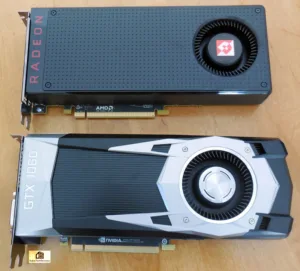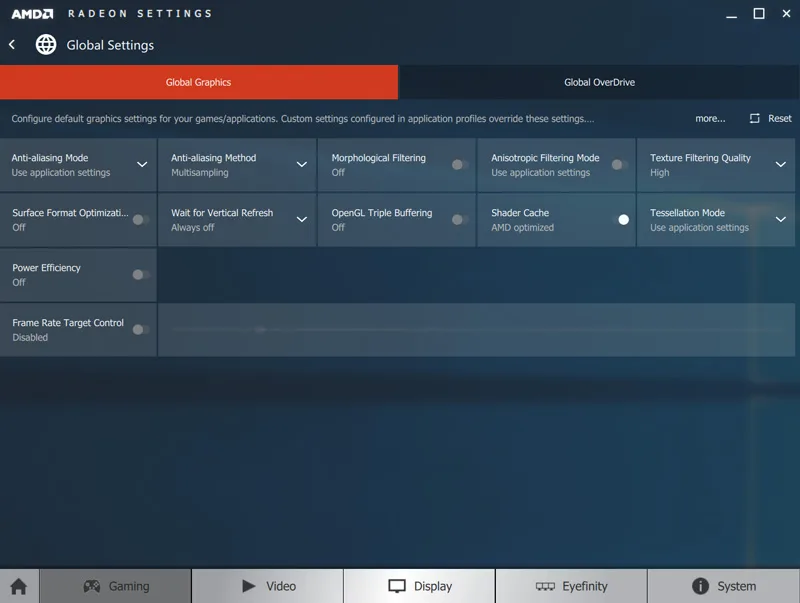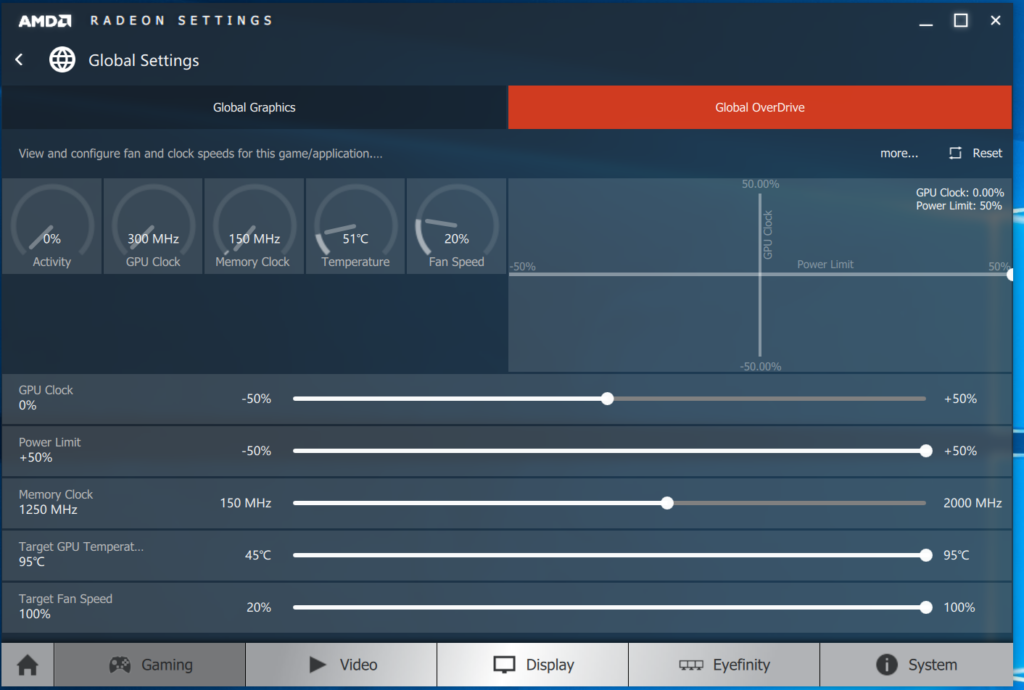Today’s Crimson Software 16.7.2 beta hotfix driver performance analysis charts the performance of 26 games focusing on the RX 480 and the 290X compared with the Crimson 16.6.2 hotfix drivers which we recently tested for our RX 480 8GB launch review. AMD has released their latest July hotfix Crimson Software driver on July 7 to address the RX 480 launch issues that we also encountered with instability, excessive power draw through the PCIe slot, and the inability to set the Power Limit to its maximum or to overclock more than 3-5%. These issues no doubt affected performance, and we want to see if the latest drivers have addressed them.
 We have run these benchmarks in preparation for our GTX 1060 launch evaluation to be posted here, Tuesday, July 19 at 6 AM Pacific Time, and we are pretty sure that those results will surprise you.
We have run these benchmarks in preparation for our GTX 1060 launch evaluation to be posted here, Tuesday, July 19 at 6 AM Pacific Time, and we are pretty sure that those results will surprise you.
We are also featuring our newest 2016 games, Mirror’s Edge Catalyst and DOOM, and we are also including Ashes of the Singularity, Hitman, and Rise of the Tomb Raider using DX12. We have also added Total War Warhammer’s newly released DX12 built-in beta benchmark to our regular benching suite plus Futuremark’s just released DX12 benchmark, Time Spy. In addition, we have also managed to test Vulkan versus Open GL performance in DOOM. We will compare the performance of 26 modern games at 1920×1080, 2560×1440, and at 3840×2160 resolutions with maximum settings.
Our testing platform is Windows 10 Home 64-bit, using an Intel Core i7-6700K at 4.00GHz which turbos to 4.4GHz for all cores as set in the ASRock Z7170 motherboard’s BIOS, and 16GB of G.SKILL DDR4 at 3200MHz. The settings and hardware are identical except for the drivers being tested.
At R9 280X or at GTX 970 performance level and above, we test at higher settings and resolutions generally than we test midrange and lower-end cards. All of our games use average and minimum frame rates to test performance at 3 resolutions when the results make sense (generally above 25 fps average), and we use DX11, or DX12 when available, and with a very strong emphasis on the latest demanding 2015-2016 AAA games.
Let’s get right to the test configuration, to the driver release notes, and then to the results.
Test Configuration – Hardware
- Intel Core i7-6700K (reference 4.0GHz, HyperThreading and Turbo boost is on to 4.4GHz; DX11 CPU graphics).
- ASRock Z7170M OC Formula motherboard (Intel Z7170 chipset, latest BIOS, PCIe 3.0/3.1 specification, CrossFire/SLI 8x+8x)
- G.SKILL Ripjaws V 16GB DDR4 RAM (2×8 GB, dual-channel at 3200MHz)
- Diamond PowerColor RX 480 8GB, reference clocks.
- VisionTek R9 290X 4GB, reference clocks tested as single GPU; fan set to 100% to prevent throttling.
- Two 2TB Toshiba 7200 rpm HDDs
- EVGA 1000G 1000W power supply unit
- Cooler Master 2.0 Seidon, supplied by Cooler Master
- Onboard Realtek Audio
- Genius SP-D150 speakers, supplied by Genius
- Thermaltake Overseer RX-I full tower case, supplied by Thermaltake
- ASUS 12X Blu-ray writer
- Monoprice Crystal Pro 4K
Test Configuration – Software
- The AMD Crimson Software 16.7.2 beta hotfix and 16.6.2 beta hotfix drivers were used for benching the RX 480 and the 290X.
- VSync is off in the control panel’s global settings. Texture Quality setting is High.
- AA enabled as noted in games; all in-game settings are specified with 16xAF always applied
- All results show average frame rates including minimum frame rates shown in italics on the chart next to the averages in smaller font.
- Highest quality sound (stereo) used in all games.
- Windows 10 64-bit Home edition, all DX11 titles were run under DX11 render paths. Our only DX12 title is run under the DX12 render path. Latest DirectX
- All games are patched to their latest versions at time of publication.
The 26 PC Game benchmark suite & 1 synthetic test
- Synthetic
- Firestrike – Basic & Extreme
- Time Spy – DX12 (2560×1440)
-
DX11* Games
- Crysis 3
- Metro: Last Light Redux (2014)
- Middle Earth: Shadows of Mordor
- Alien Isolation
- Dragon’s Age: Inquisition
- Dying Light
- Total War: Attila
- Grand Theft Auto V
- ProjectCARS
- the Witcher 3
- Batman: Arkham Origins
- Mad Max
- Fallout 4
- Star Wars Battlefront
- Assassin’s Creed Syndicate
- Just Cause 3
- Rainbow Six Siege
- DiRT Rally
- Far Cry Primal
- Tom Clancy’s The Division
- DOOM (*OpenGL & Vulkan)
- Mirror’s Edge Catalyst
- DX12 Games
- Ashes of the Singularity
- Hitman
- Rise of the Tomb Raider
- Total War Warhammer
AMD Settings
Here are the settings that we always use in AMD’s Crimson Control Center for our default benching. The Power Efficiency Toggle is left off in our benching. Please note that 100% fan speed is used for benching the 290X reference version, and it does not throttle at all.
In our AMD reference RX 480 8GB launch review, using Crimson 16.6.2 drivers, we had to leave the Power Limit settings at stock (0%) to ensure the cards stability, but this time, with the Diamond reference RX 480 8GB, we were able to set it to +50% as we always do for all our our video card evaluations. We believe that setting the Temperature and Power Draw/Limit to their maximums eliminates the variability that throttling may otherwise cause with midrange and higher end video cards.
Below are the stock settings available to us in WattMan as originally used for the RX 480 launch review. This time, the Temperature profile is set to manual and maximum, and the Power Limit is set to +50%. Fan and voltage profiles are always left at default.
Release Notes Highlights for Catalyst 16.7.2 Hotfix Drivers
The release notes and download links for the latest Crimson Catalyst 16.7.2 drivers can be found here.
Radeon Software Crimson Edition 16.7.2 Highlights
- The “compatibility mode” UI toggle was designed to reduce total power with minimal performance impact on AMD Radeon™ RX480 reference boards and has been made available to users in the Global Settings menu of Radeon Settings (first introduced in the previous Radeon Software Crimson Edition 16.7.1 driver). This toggle is in “off” by default.
- Support for DOOM (with Vulkan API) – enables performance enhancements through support for Async Compute and Shader Intrinsics.
Fixed Issues
- In the previous Radeon Software Crimson Edition 16.7.1 driver the “Restore Factory Defaults” option under Preferences of Radeon Settings Software would not set the “Compatibility Mode” UI toggle to its default “OFF” value. This is fixed in the Radeon Software Crimson Edition 16.7.2 driver. The “Restore Factory Defaults” options resets all Radeon Settings to their factory default values.
Known Issues
- A few game titles may fail to launch or crash if the AMD Gaming Evolved overlay is enabled. A temporary workaround is to disable the AMD Gaming Evolved “In Game Overlay”.
- Radeon™ Pro Duo may experience a black screen in Total War™: Warhammer with the games API set to DirectX®12 and V-Sync enabled.
- DiRT™ Rally may experience flickering terrain in some races when the advanced blending option is enabled in the games settings page.
- Some Overdrive settings may not appear in Radeon Settings for Radeon™ Fury X when in AMD Crossfire mode.
- Dota™2 may crash when using the Vulkan™ API and the user changes resolutions or quality settings.
- Battlefield™ 4 may experience crashes when using Mantle. As a work around users are suggested to switch to DirectX®11.
- Need for Speed™ may experience flickering on some light sources in AMD Crossfire mode.
- Frame Rate Target Control gaming profiles may fail to enable for some games.
- Radeon Wattman may retain settings of an overclock after it has failed. If you have failed an overclock with a system hang or reboot make sure to use the “Reset” option in the Radeon WattMan settings page when the system has rebooted.
- Low frame rate or stutter may be experienced Wolfenstein®: The Old Blood™ on Radeon™ RX 480.
- Assassin’s Creed® Syndicate may experience a game crash or hang when in game settings are set to high or greater.
- Disabling AMD Crossfire mode on Radeon™ RX 480 may disable the device in Windows® Device Manager. A workaround is to reboot the system to re-enable the device.
Let’s head to the chart to compare the driver progress from the 16.6.2 Crimson drivers for RX 480 and the 290X to the new Crimson Software 16.7.2 hot-fix driver.
The Summary Chart
Here are our results of 26 games and 1 synthetic test. The drivers are noted on the chart. “X” means the benchmark was not run, and an asterisk (*) means that there are some real issues with the visuals.
All results except for Firestrike/Time Spy are expressed in average fps (in Bold) and also generally in minimum fps (where they make sense, in smaller italics next to the averages). Each set of drivers are compared against the other in the adjoining results column in white (newest 16.7.2 driver) versus black (older 16.6.2 drivers).
We note some very good performance improvements for the RX 480 with the latest 16.7.2 hotfix drivers. Some of this increased performance may be due to being able to set the Power Limit to its maximum, possibly eliminating throttling which we may have experienced with the launch 16.6.2 drivers. And we have noticed generally more stability with the new drivers, the one exception being Grand Theft Auto V, where we experienced some crashes to the desktop, especially after changing the resolution.
Both Hitman and Ashes of the Singularity both have received multiple patches which may have altered the performance between our tests.
We also see some increased performance with the 290X in some games, and this time, the stuttering that we encountered with Grand Theft Auto V in earlier drivers appear to be resolved. Finally, we see some good performance increase in DOOM from using the Vulkan API over using OpenGL.
Let’s head for our conclusion.
Conclusion:
If you are running a RX 480, we would definitely recommend that you upgrade to the latest Crimson Software Catalyst 16.7.2 hotfix beta driver from the launch drivers. It is not only AMD’s latest driver bringing performance advantages that are sometimes quite significant, it also brings more stability to the RX 480. In addition, for several games in our benching suite, Crimson Software 16.7.2 hotfix may bring some improvement for the R9 290X over the 16.6.2 hotfix drivers.
Unfortunately, if you are watching Blu-Ray movies or using other DRM-enabled programs, you will want to continue using Crimson 16.3.2 WHQL driver which was released at the end of March and avoid using these drivers unless you are using the RX 480 which requires 16.6.2 or higher.
Stay tuned, next up, we are going to reveal the performance of the GTX 1060 versus the RX 480 on Tuesday, July 19th at 6 AM PDT. 
Happy gaming!



